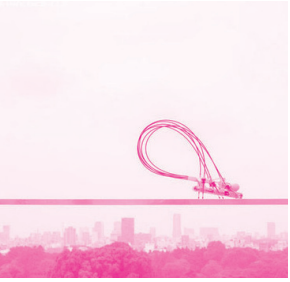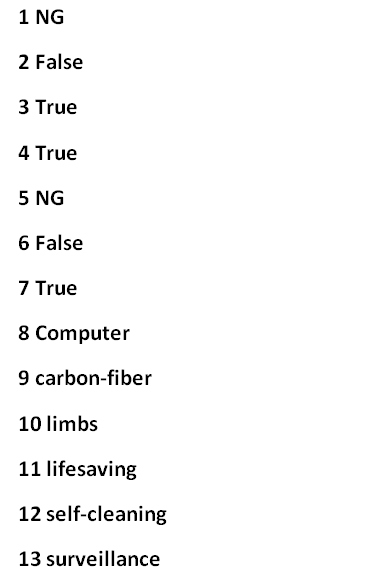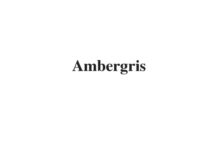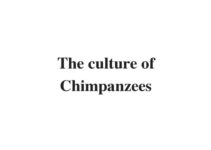Table of Contents
Passage
What has fins like a whale, skin like a lizard, and eyes like a moth? The future of engineering. Andrew Parker, an evolutionary biologist, knelt in the baking red sand of the Australian out back just south of Alice Springs and eased the right hind leg of a thorny devil into a dish of water.
A “Its back is completely drenched!” Sure enough, after 30 seconds, water from the dish had wicked up the lizard’s leg and was glistening all over its prickly hide. In a few seconds more the water reached its mouth, and the lizard began to smack its jaws with evident satisfaction. It was, in essence, drinking through its foot. Given more time, the thorny devil can perform this same conjuring trick on a patch of damp sand—a vital competitive advantage in the desert. Parker had come here to discover precisely how it does this, not from purely biological interest, but with a concrete purpose in mind: to make a thornydevil-inspired device that will help people collect lifesaving water in the desert. “The water’s spreading out incredibly fast!” he said, as drops from his eyedropper fell onto the lizard’s back and vanished, like magic. “Its skin is far more hydrophobic than I thought. There may well be hidden capillaries, channeling the water into the mouth.”
B Parker’s work is only a small part of an increasingly vigorous, global biomimetics movement. Engineers in Bath, England, and West Chester, Pennsylvania, are pondering the bumps on the leading edges of humpback whale flukes to learn how to make airplane wings for more agile flight. In Berlin, Germany, the fingerlike primary feathers of raptors are inspiring engineers to develop wings that change shape aloft to reduce drag and increase fuel efficiency. Architects in Zimbabwe are studying how termites regulate temperature, humidity, and airflow in their mounds in order to build more comfortable buildings, while Japanese medical researchers are reducing the pain of an injection by using hypodermic needles edged with tiny serrations, like those on a mosquito’s proboscis, minimizing nerve stimulation.

C Ronald Fearing, a professor of electrical engineering at the University of California, Berkeley, has taken on one of the biggest challenges of all: to create a miniature robotic fly that is swift, small, and maneuverable enough for use in surveillance or search-and-rescue operations. Fearing made his own, one of which he held up with tweezers for me to see, a gossamer wand some 11 millimeters long and not much thicker than a cat’s whisker. Fearing has been forced to manufacture many of the other minute components of his fly in the same way, using a micromachining laser and a rapid prototyping system that allows him to design his minuscule parts in a computer, automatically cut and cure them overnight, and assemble them by hand the next day under a microscope.
D With the microlaser he cuts the fly’s wings out of a two-micron polyester sheet so delicate that it crumples if you breathe on it and must be reinforced with carbon-fiber spars. The wings on his current model flap at 275 times per second~faster than the insect’s own wings—and make the blowfly’s signature buzz. “Carbon fiber outperforms fly chitin,” he said, with a trace of selfsatisfaction. He pointed out a protective plastic box on the lab bench, which contained the fly-bot itself, a delicate, origami-like framework of black carbonfiber struts and hairlike wires that, not surprisingly, looks nothing like a real fly. A month later it achieved liftoff in a controlled flight on a boom. Fearing expects the fly-bot to hover in two or three years, and eventually to bank and dive with flylike virtuosity.
E Stanford University roboticist Mark Cutkosky designed a gecko-inspired climber that he christened Stickybot. In reality, gecko feet aren’t sticky— they’re dry and smooth to the touch—and owe their remarkable adhesion to some two billion spatula-tipped filaments per square centimeter on their toe pads, each filament only a hundred nanometers thick. These filaments are so small, in fact, that they interact at the molecular level with the surface on which the gecko walks, tapping into the low-level van der Waals forces generated by molecules’ fleeting positive and negative charges, which pull any two adjacent objects together. To make the toe pads for Stickybot, Cutkosky and doctoral student Sangbae Kim, the robot’s lead designer, produced a urethane fabric with tiny bristles that end in 30-micrometer points. Though not as flexible or adherent as the gecko itself, they hold the 500-gram robot on a vertical surface.
F Cutkosky endowed his robot with seven-segmented toes that drag and release just like the lizard’s, and a gecko-like stride that snugs it to the wall. He also crafted Stickybot’s legs and feet with a process he calls shape deposition manufacturing (SDM), which combines a range of metals, polymers, and fabrics to create the same smooth gradation from stiff to flexible that is present in the lizard’s limbs and absent in most man-made materials. SDM also allows him to embed actuators, sensors, and other specialized structures that make Stickybot climb better. Then he noticed in a paper on gecko anatomy that the lizard had branching tendons to distribute its weight evenly across the entire surface of its toes. Eureka. “When I saw that, I thought, Wow, that’s great!” He subsequently embedded a branching polyester cloth “tendon” in his robot’s limbs to distribute its load in the same way.
G Stickybot now walks up vertical surfaces of glass, plastic, and glazed ceramic tile, though it will be some time before it can keep up with a gecko. For the moment it can walk only on smooth surfaces, at a mere four centimeters per second, a fraction of the speed of its biological role model. The dry adhesive on Stickybot’s toes isn’t self-cleaning like the lizard’s either, so it rapidly clogs with dirt. “There are a lot of things about the gecko that we simply had to ignore,” Cutkosky says. Still, a number of real-world applications are in the offing. The Department of Defense’s Defense Advanced Research Projects Agency (DARPA), which funds the project, has it in mind for surveillance: an automaton that could slink up a building and perch there for hours or days, monitoring the terrain below. Cutkosky hypothesizes a range of civilian uses. “I’m trying to get robots to go places where they’ve never gone before,” he told me. “I would like to see Stickybot have a real-world function, whether it’s a toy or another application. Sure, it would be great if it eventually has a lifesaving or humanitarian role…”
H For all the power of the biomimetics paradigm, and the brilliant people who practice it, bio-inspiration has led to surprisingly few mass-produced products and arguably only one household word—Velcro, which was invented in 1948 by Swiss chemist George de Mestral, by copying the way cockleburs clung to his dog’s coat. In addition to Cutkosky’s lab, five other high-powered research teams are currently trying to mimic gecko adhesion, and so far none has come close to matching the lizard’s strong, directional, self-cleaning grip. Likewise, scientists have yet to meaningfully re-create the abalone nanostructure that accounts for the strength of its shell, and several well-funded biotech companies have gone bankrupt trying to make artificial spider silk.
Questions
Questions 1-7 Do the following statements agree with the information given in Reading Passage? In boxes 1-7 on your answer sheet, write
TRUE if the sataement agrees with the information
FALSE if the statement contradicts the information
NOT GIVEN if there is no information on this
1 Andrew Parker failed to make effective water device which can be used in desert.
2 Skin of lizard is easy to get wet when it contacts water.
3 Scientists apply inspiration from nature into many artificial engineering.
4 Tiny and thin hair under gecko’s feet allows it to stick to the surface of object.
5 When gecko climbs downward, its feet release a certain kind of chemical to make them adhesive.
6 Famous cases stimulate a large number of successful products of biomimetics in real life.
7 Velcro is well-known for its bionics design .
Questions 8-10 Filling the blanks below. Write NO MORE THAN THREE WORDS AND/OR A NUMBER from the passage for each question of robot below
Ronald Fearing made tiny components of robotic fly in 8 ………………… by specialized Techniques.
The robotic fly’s main structure outside is made of 9 …………………… and long and thin wires which make it unlike fly at all.
Cutkosky applied an artificial material in stickybot’s 10 ………………………. as a tendon to split pressure like lizard’s does.
Questions 11-13 Fill the blanks below. Write NO MORE THAN THREE WORDS AND/OR A NUMBER from the passage for each answer about facts of stickybot.
11 Stickybot’s feet doesn’t have function which makes it only be able to walk on smooth surface.
12 DARPA are planning to use stickybot for .
13 Cutkosky assume that stickybot finally has potential in or other human-related activities.
Answers



